
“Fazalullah is dead” [exclamation]. “Uzair Baloch has just released a statement in Dubai alleging that he shot people on the orders of Asif Ali Zardari” [more exclamations]. “Ishrat-ul-Ibad has been told to resign” [thundering exclamations].
These are just a few of last month’s top stories broadcast on television to have “bounced”, as we like to say in the newsrooms.
But, you might ask, did the news networks that aired these juicy stories acknowledge they had been wrong? The answer is a resounding no. In the good old days, it was considered shameful if a story bounced – in the print media at any rate – and reporters stood to lose their credibility. Suffice to say, no such burden of conscience hampers the electronic media. As the number of news channels continues to rise, the lifespan of breaking news shrinks. Yousaf Baig Mirza, the former managing director of PTV, says that the shelf life of breaking news has now shrunk to 45 seconds. This means that, as soon as the headline’s time is up, other channels will begin airing the same news and the channel that aired it first can no longer ensure exclusivity.
So, on dry days when news is scarce and the buzzards are circling overhead, channels take to “inventing” news. Crime, of course, has huge potential as breaking news and many news directors are only too happy to twist a story into something heinous and sensational – ready to be served up to the public. “But why?” I asked despairingly of Marium Chaudhry, the executive producer of Geo News. “Unlike the print media, the electronic media can get away with it because broadcasting is a faster medium,” she said, and “their priority is to break news as soon as possible” – even if that means relying on just one reporter or one source to verify the story.
Chaudhry may be right when it comes to news stories where there is no agenda to twist, but examples abound of news reports being twisted intentionally to malign a person, a party or an event. If you ask me, the Lal Masjid operation fiasco of 2007 was one of the biggest events to be twisted around to serve political purposes. Top journalists were used to report “the facts” (which turned out to be wrong) and “true stories” (which turned out to be baseless). A media campaign was run to create the perception that hundreds of women and children had died during the operation and that the army had used chemical weapons against innocent civilians. A recent one-member judicial commission report put these rumours firmly to rest: not only were such stories proven wrong, said the report, but some media persons had helped create the unfounded stories that formed part of the campaign against the government then headed by General Pervez Musharraf.
Remember the news story (and campaign) about the car that “ran on water”? A motor mechanic was presented as the greatest inventor since Bell for having invented a car that didn’t need petrol, just water. The story snowballed into a campaign in the hands of its renowned TV hosts and the “inventor” became a public hero – for a few weeks anyway. Only after did it transpire that the whole affair had been thought up by a band of geniuses bent on defrauding the government.

In principle, it is the reporter that uses his or her source, but this can also go the other way and only an experienced reporter may be sharp enough to smell something fishy. Here, the media industry lacks any mechanism to check the practice of broadcasting false reports. Potentially damaging stories have gone unnoticed while ordinary citizens find they are helpless if a reporter, anchor or media organization decides to take them on. Accountability within organizations is thus important. Given the absence of checks and balances to discourage clutter and campaigns based on vested interests, the media stands to endanger its personnel and the public at large.
If this vacuum is not filled by media organizations, then it opens up room for government interference and censorship. Why should we wait for this? We sorely need to achieve a balance between censorship and responsible reporting, and this is something best done by media organizations themselves.
Follow the author @fawadchaudhry
These are just a few of last month’s top stories broadcast on television to have “bounced”, as we like to say in the newsrooms.
But, you might ask, did the news networks that aired these juicy stories acknowledge they had been wrong? The answer is a resounding no. In the good old days, it was considered shameful if a story bounced – in the print media at any rate – and reporters stood to lose their credibility. Suffice to say, no such burden of conscience hampers the electronic media. As the number of news channels continues to rise, the lifespan of breaking news shrinks. Yousaf Baig Mirza, the former managing director of PTV, says that the shelf life of breaking news has now shrunk to 45 seconds. This means that, as soon as the headline’s time is up, other channels will begin airing the same news and the channel that aired it first can no longer ensure exclusivity.
So, on dry days when news is scarce and the buzzards are circling overhead, channels take to “inventing” news. Crime, of course, has huge potential as breaking news and many news directors are only too happy to twist a story into something heinous and sensational – ready to be served up to the public. “But why?” I asked despairingly of Marium Chaudhry, the executive producer of Geo News. “Unlike the print media, the electronic media can get away with it because broadcasting is a faster medium,” she said, and “their priority is to break news as soon as possible” – even if that means relying on just one reporter or one source to verify the story.
When news is scarce and the buzzards are circling overhead, channels take to "inventing" news
Chaudhry may be right when it comes to news stories where there is no agenda to twist, but examples abound of news reports being twisted intentionally to malign a person, a party or an event. If you ask me, the Lal Masjid operation fiasco of 2007 was one of the biggest events to be twisted around to serve political purposes. Top journalists were used to report “the facts” (which turned out to be wrong) and “true stories” (which turned out to be baseless). A media campaign was run to create the perception that hundreds of women and children had died during the operation and that the army had used chemical weapons against innocent civilians. A recent one-member judicial commission report put these rumours firmly to rest: not only were such stories proven wrong, said the report, but some media persons had helped create the unfounded stories that formed part of the campaign against the government then headed by General Pervez Musharraf.
Remember the news story (and campaign) about the car that “ran on water”? A motor mechanic was presented as the greatest inventor since Bell for having invented a car that didn’t need petrol, just water. The story snowballed into a campaign in the hands of its renowned TV hosts and the “inventor” became a public hero – for a few weeks anyway. Only after did it transpire that the whole affair had been thought up by a band of geniuses bent on defrauding the government.

In principle, it is the reporter that uses his or her source, but this can also go the other way and only an experienced reporter may be sharp enough to smell something fishy. Here, the media industry lacks any mechanism to check the practice of broadcasting false reports. Potentially damaging stories have gone unnoticed while ordinary citizens find they are helpless if a reporter, anchor or media organization decides to take them on. Accountability within organizations is thus important. Given the absence of checks and balances to discourage clutter and campaigns based on vested interests, the media stands to endanger its personnel and the public at large.
If this vacuum is not filled by media organizations, then it opens up room for government interference and censorship. Why should we wait for this? We sorely need to achieve a balance between censorship and responsible reporting, and this is something best done by media organizations themselves.
On Twitter this week...
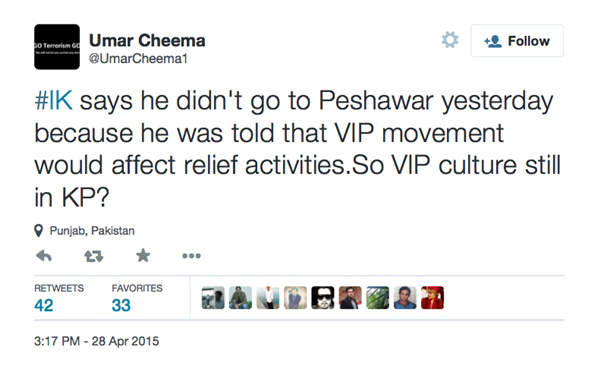
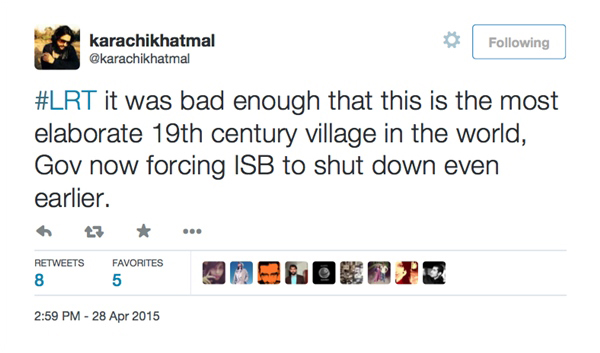
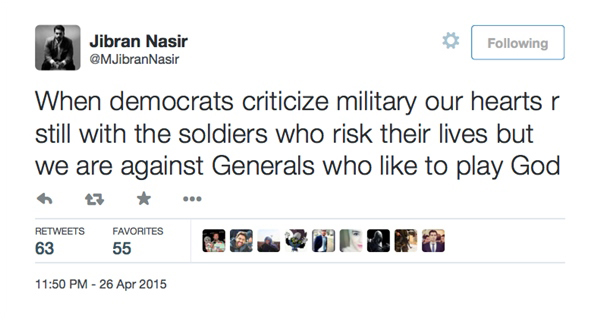
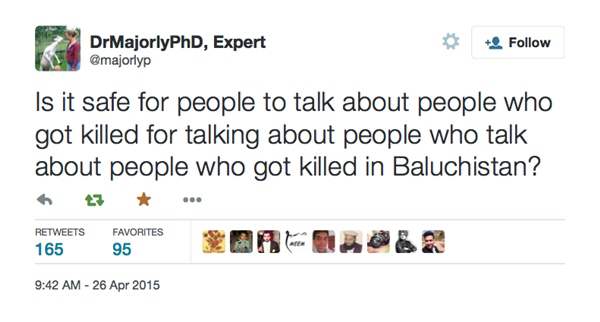
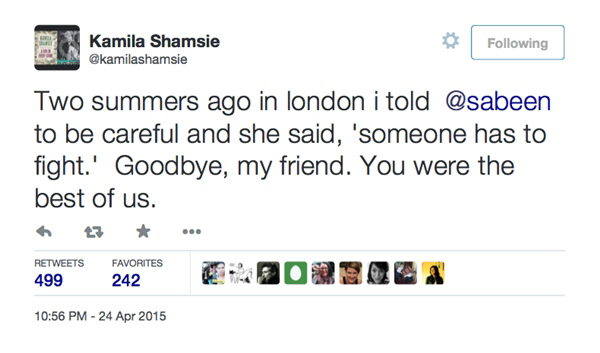
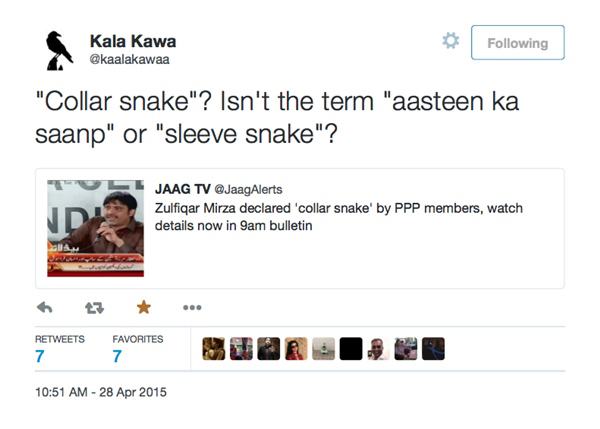
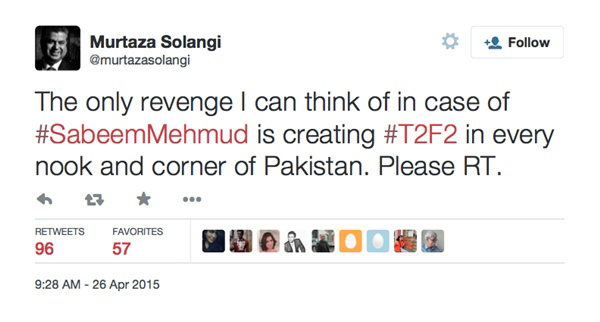
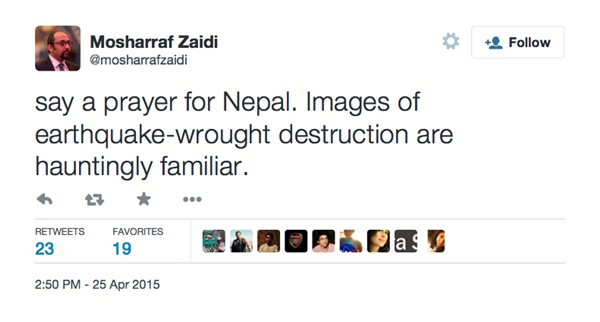
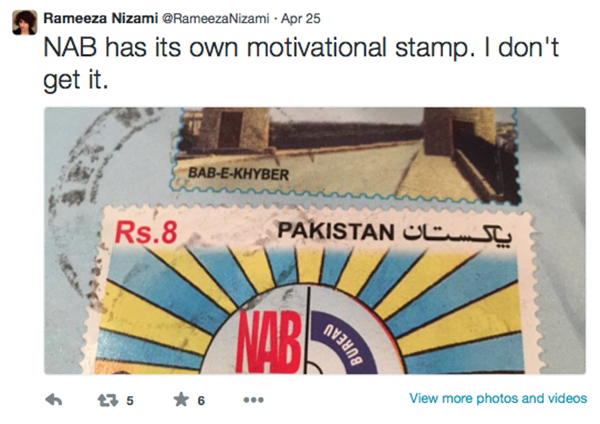
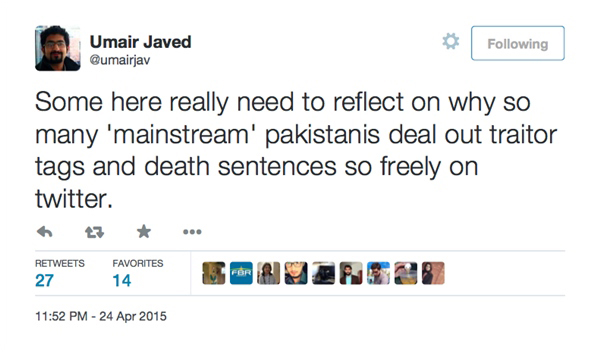
Follow the author @fawadchaudhry

